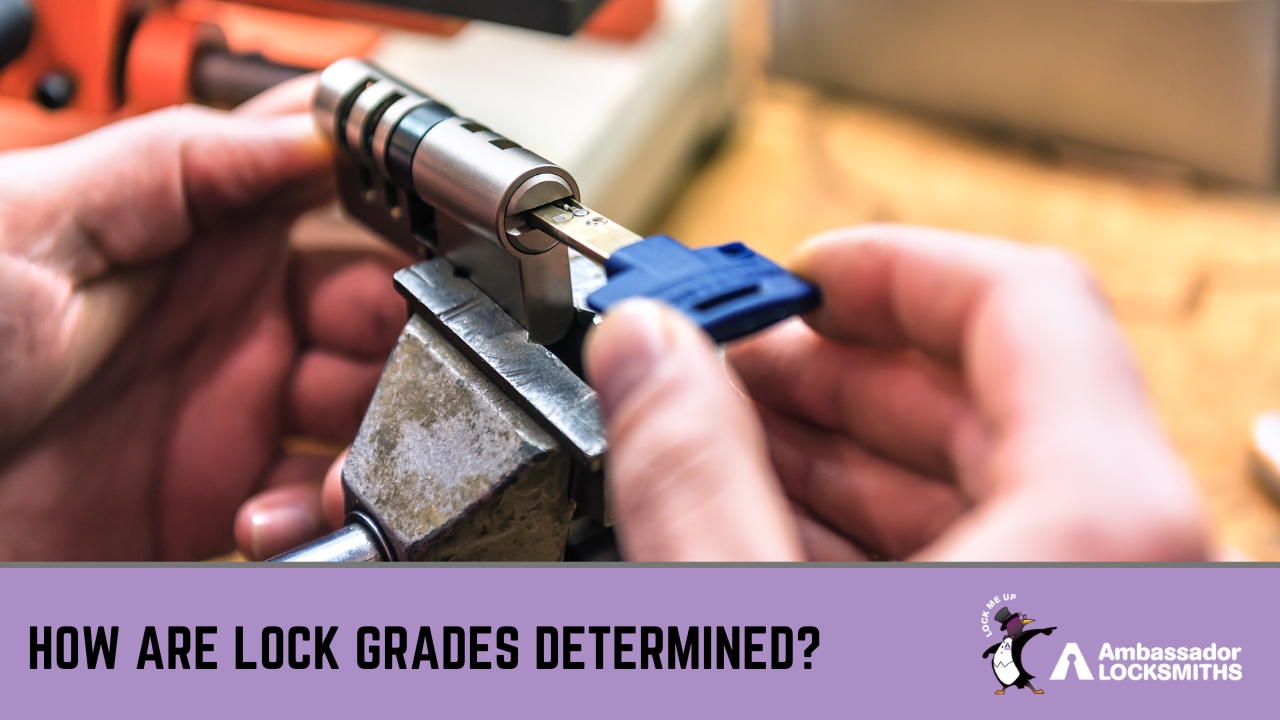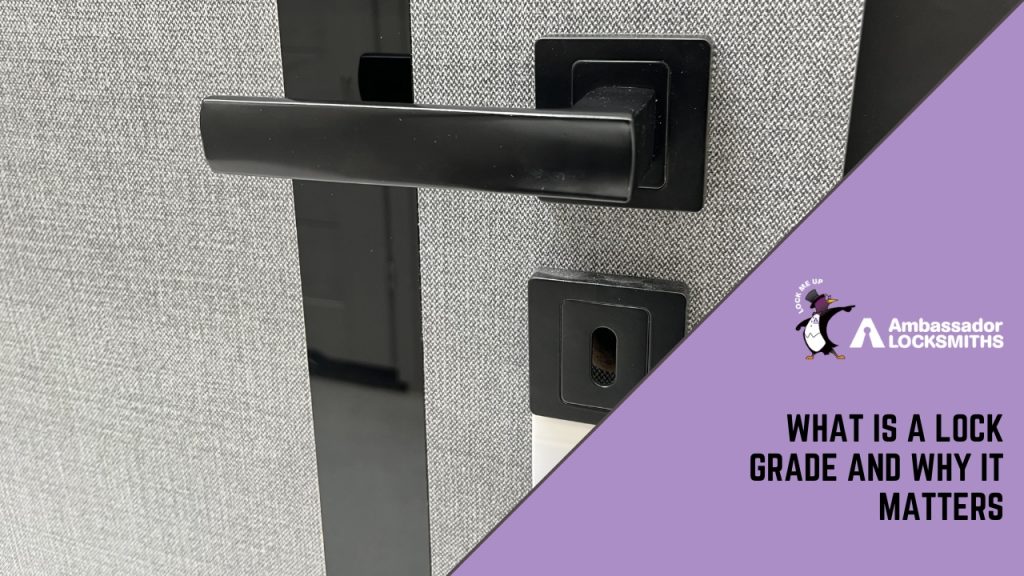Many property owners install locks based on price or appearance, without knowing how secure or durable they really are. This leads to common issues—locks wearing out within months, jamming during use, or failing to stop forced entry. In some cases, a break-in occurs because the lock wasn’t designed for the level of risk at that access point.
Cheap or mismatched locks may seem cost-effective at first but often result in damaged doors, lost belongings, or higher insurance premiums. These issues are more likely in areas exposed to high use or public access, like front doors, garage entries, or commercial entry points.
Lock grades provide a standardised way to assess a lock’s performance. They show how well a lock holds up under pressure, use, and forced entry attempts. Choosing the right grade helps prevent unnecessary repairs, avoids security gaps, and ensures compliance with some insurance requirements. This article explains how lock grades work, how they’re tested, and which grade fits each door type.
What Is a Lock Grade?
A lock grade is a classification that shows how well a lock performs under specific test conditions. It provides a measurable way to compare durability, strength, and resistance to forced entry. In most cases, lock grades follow the ANSI/BHMA standard. This system is used in Australia as a benchmark, especially when selecting locks for external doors or commercial use.
There are three main grades, each suited to different levels of risk and frequency of use:
| Grade | Use Case | Security Level |
| Grade 1 | Commercial doors, external access | Highest strength |
| Grade 2 | Internal garage, side doors | Medium strength |
| Grade 3 | Bedrooms, storage areas | Basic protection |
Grade 1 locks offer the strongest protection and are built for heavy use. Grade 2 provides a balance between strength and cost, often used in homes. Grade 3 is for low-risk doors with minimal access, like internal rooms.
Understanding this system helps match the right lock to the right door, preventing overuse of low-grade locks in high-risk areas.
How Are Lock Grades Determined?
Lock grades are set through a series of standardised tests designed to measure strength, durability, and resistance to tampering. These tests replicate real conditions so the results reflect how a lock performs over time.
The main tests include
- cycle testing for repeated use
- strength testing against force
- security testing for tampering resistance
- finish testing for corrosion and wear
Each grade reflects how well a lock performs across these tests. Grade 1 products must meet the highest standards, making them stronger and more reliable than Grade 2 or 3. This provides a clear guide for choosing locks based on expected use and level of risk.

When Should You Use Each Lock Grade?
Each grade of lock is designed for a different level of risk and frequency of use. Choosing the correct one ensures that doors remain secure while also lasting longer under daily operation.
Grade 1 locks are suited to main entry points, garage access, and commercial buildings. These areas face frequent use and higher risk, so stronger locks are required.
Grade 2 locks are common for residential use, such as side doors, internal garage entries, and home offices. They provide reliable protection without the higher cost of Grade 1.
Grade 3 locks are for low-risk areas like bedrooms, bathrooms, or small storage spaces. These doors are used less often and do not require high resistance to force.
Matching the lock grade to the correct door prevents overuse of low-grade locks on high-risk entries. It also avoids spending more than necessary on areas that do not need maximum protection.
Why Lock Grade Matters for Australian Homes and Businesses
Security issues are not limited to major cities. Break-ins and property crime can affect suburban homes, rural sheds, and commercial premises. Using the wrong lock increases the chance of forced entry, early lock failure, or even insurance claims being rejected.
There are several reasons why choosing the correct grade is important

- security since higher-grade locks resist forced entry methods such as drilling or prying
- durability since locks in high-use areas last longer when built to stronger standards
- cost control since a quality lock reduces the need for frequent repairs or replacements
- compliance since some insurers require certain grades before covering theft or damage
Selecting the right grade ensures that the first line of defence on each door matches the level of risk. A Grade 1 lock on external entries offers higher protection, while Grade 2 or 3 may be suitable for internal spaces with lower risk. This approach balances safety, cost, and long-term performance.
Need Help Choosing the Right Lock?
At ambassador locksmiths, we understand that choosing the right lock grade can be confusing. Many people are not sure which grade works best for each door, and this often leads to security gaps or unnecessary expenses.
Our locksmiths can assess your property and recommend the right lock for every access point. Whether you need strong protection for a front entry, reliable options for side doors, or practical solutions for internal rooms, we match each lock to its purpose.
We provide lock installation, replacement, and upgrades across Newcastle and Lake Macquarie. For advice from a team with experience in both residential and commercial security, contact us to arrange a consultation.
Frequently Asked Questions
How do I know which lock grade I currently have?
Most locks have the grade stamped on the body or listed on the packaging. If this information is missing, our locksmiths can inspect the lock and confirm its grade.
Can a Grade 3 lock be used for front doors?
We do not recommend Grade 3 for external entries. These locks are designed for low-risk areas inside a property. For front doors, a Grade 1 or 2 is more suitable.
Is it possible to upgrade to a higher-grade lock?
Yes. Existing locks can be replaced with higher-grade options to improve security. We provide upgrades for both homes and businesses.
Do insurance companies require certain lock grades?
Some insurers specify minimum security standards. Using locks that meet the right grade can help ensure compliance and reduce disputes in the event of a claim.
What factors should influence my choice of lock grade?
The decision should be based on door location, frequency of use, and level of risk. External and high-use doors usually need Grade 1, while internal doors may suit Grade 2 or 3.

